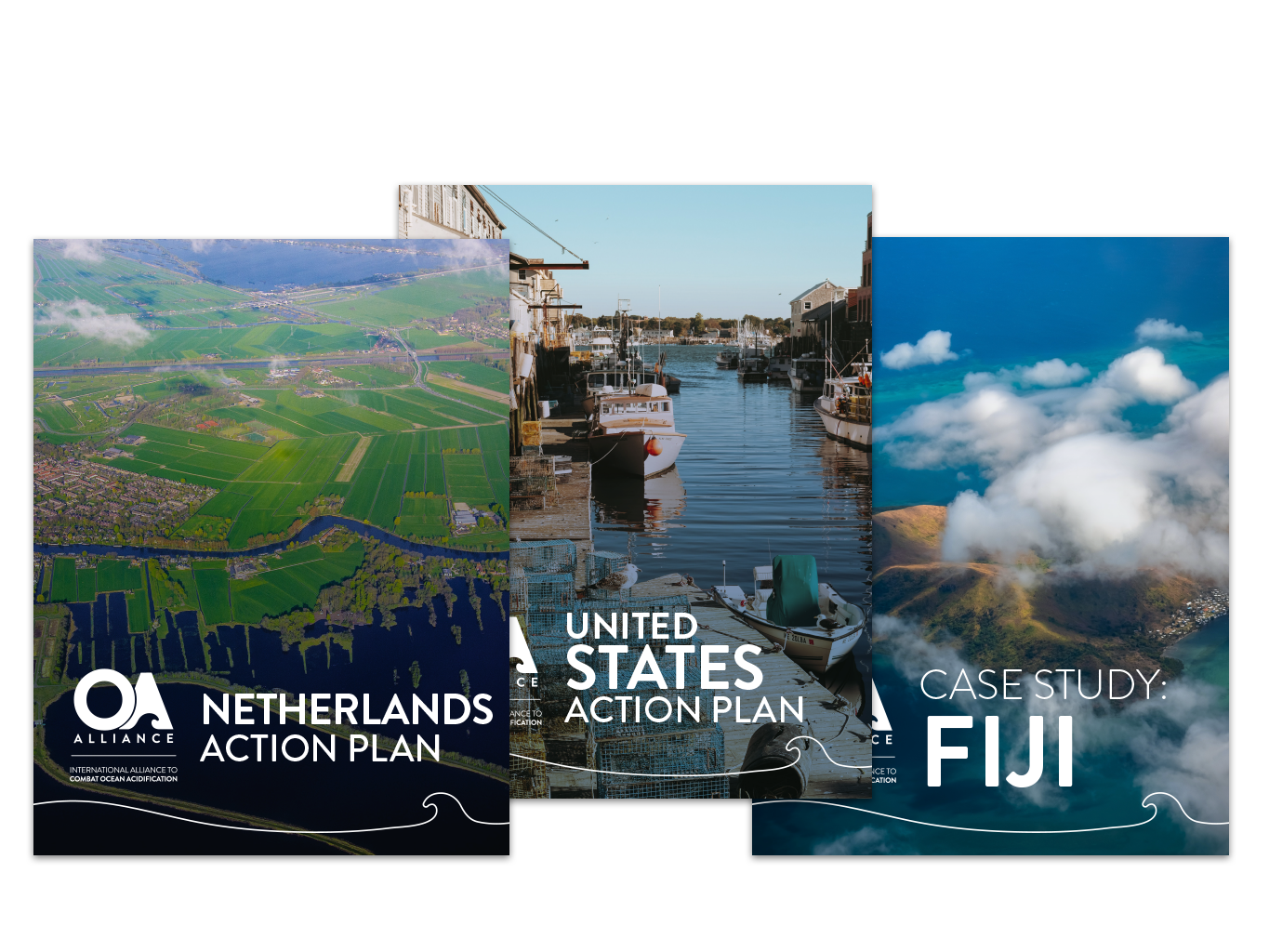
OA Action Plan
We all have a role to play to increase ambition for climate action and ensure the resilience of marine and coastal communities. Through the development of OA Action Plans, OA Alliance members are proactively responding to the impacts of OA and promoting solutions that advance knowledge into local action.
DO YOU WANT TO ADDRESS CLIMATE-OCEAN IMPACTS IN YOUR REGION?
What is an OA Action Plan?
An OA Action Plan encompasses the actions that OA Alliance members will take (or are taking) to better understand the impacts of OA to their region and accelerate OA mitigation, adaptation, and resilience nearshore.
Who is best suited to create an OA Action Plan?
National, subnational, Tribal and First Nation governments members have all created OA Action Plans. Affiliate members like regional science bodies, NGOs, or seafood growers have also created OA Actions that leverage their expertise, mission and platform.
It’s important to remember there is no “one size fits all” approach:
Some members create a stand-alone OA Action Plan while others choose to incorporate OA Actions across existing climate plans, ocean and coastal policies, marine management strategies, or communications. Approaches to developing an OA Action Plan should be place based and unique to your keystone species, current capacity, and policy or management goals.
The structure for an OA Action Plan
is organized around 6 key themes:
#1
-
The #1 cause of ocean acidification. By mitigating and reducing CO2 we are mitigating and reducing OA.
#2
-
of climate-ocean impacts, locally and globally. Better understanding of local trends, drivers, biological and ecological impacts of OA can inform the best adaptation and resilience building actions.
#3
-
Implement actions that reduce local inputs of land-based pollutants (e.g., nutrient loading, storm water, and wastewater) that make conditions worse.
#4
-
To protect the environment and coastal communities from climate-ocean impacts.
#5
-
Engage policy makers, industry, scientists and the public on the growing threat posed by OA, as well as local actions that may be taken to address OA.
#6
-
Secure sustained support globally, regionally and locally for increased investments and actions
Member examples
Through the development of Ocean Acidification Action Plans, OA Alliance members are proactively responding to the impacts of ocean acidification and promoting solutions that advance knowledge into policy action.









